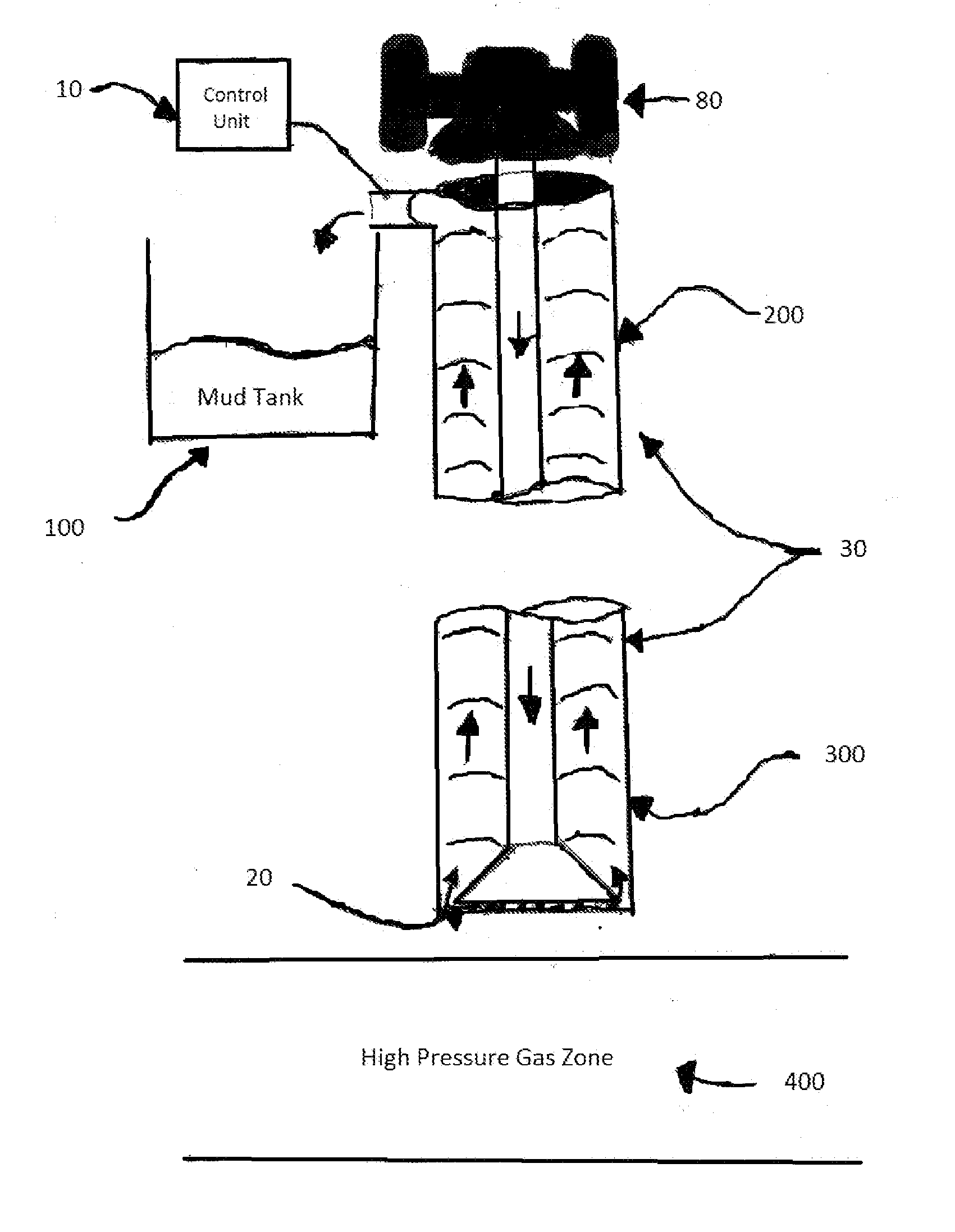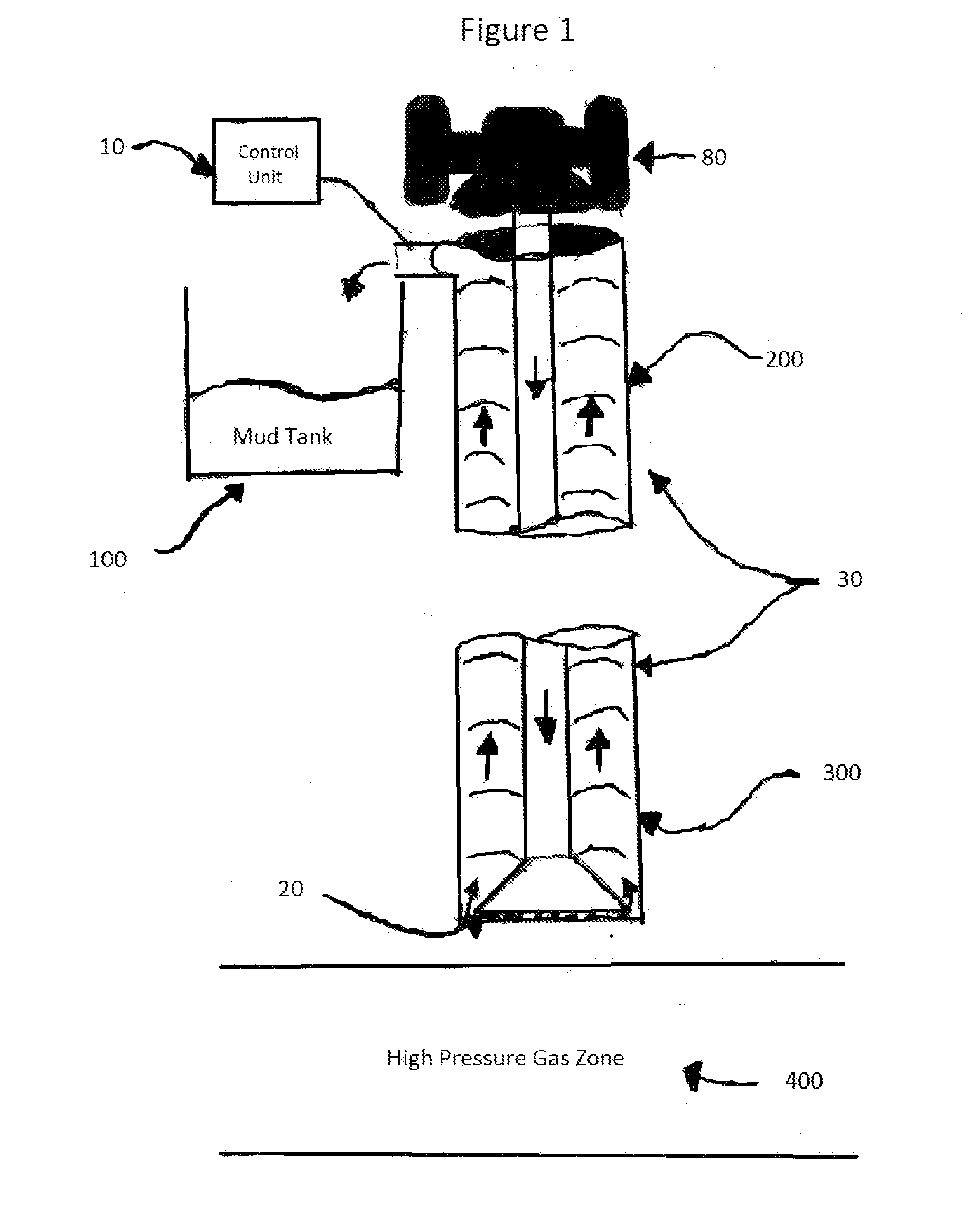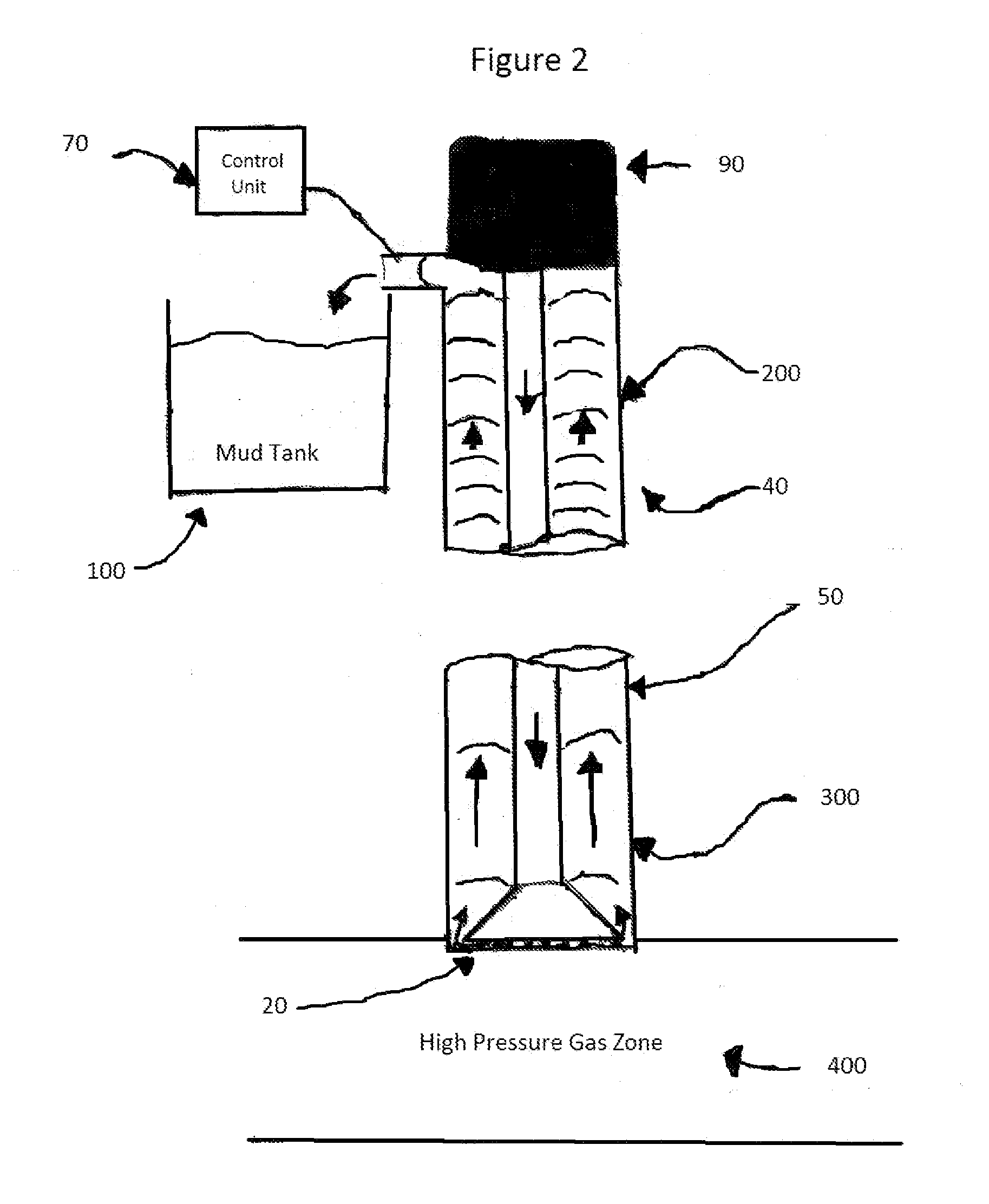Numerical Method to determine a system anomaly using as an example: A Gas Kick detection system.
- Summary
- Abstract
- Description
- Claims
- Application Information
AI Technical Summary
Benefits of technology
Problems solved by technology
Method used
Image
Examples
Embodiment Construction
[0032]The “Bollingham Technique” is used in this Blow Out detection system by placing sending unit on the collar or as part of the drillbit (20). A receiving unit is placed at the surface (10). The system begins normal operation with an open BOP (80). The sending unit acts as a notification of a gas kick (70) as the column is full of even spaced messages which get compressed due to the increase in the speed of the mud flow. The control unit is also simulating the progress of the gas kick given the information gathered. This allows for time to close the preventer: The BOP is closed in plenty of time to stop a disaster (90). In fact, the sooner the better as heavier mud can be circulated into the well to offset the kick pressure. This method can work minutes faster than any other system.
[0033]The sending and receiving technology were first used in the 70s for directional drilling. To design a system to detect gas kicks using the “Bollingham Technique” is new as is the special sending ...
PUM
 Login to View More
Login to View More Abstract
Description
Claims
Application Information
 Login to View More
Login to View More - R&D
- Intellectual Property
- Life Sciences
- Materials
- Tech Scout
- Unparalleled Data Quality
- Higher Quality Content
- 60% Fewer Hallucinations
Browse by: Latest US Patents, China's latest patents, Technical Efficacy Thesaurus, Application Domain, Technology Topic, Popular Technical Reports.
© 2025 PatSnap. All rights reserved.Legal|Privacy policy|Modern Slavery Act Transparency Statement|Sitemap|About US| Contact US: help@patsnap.com



